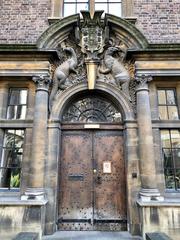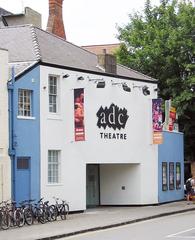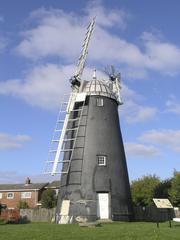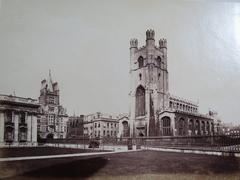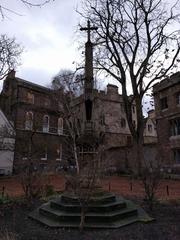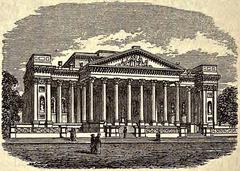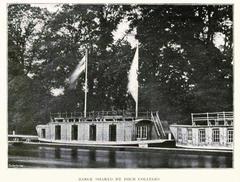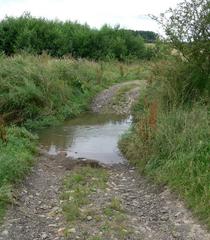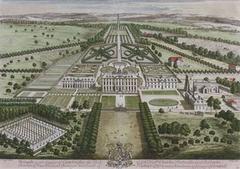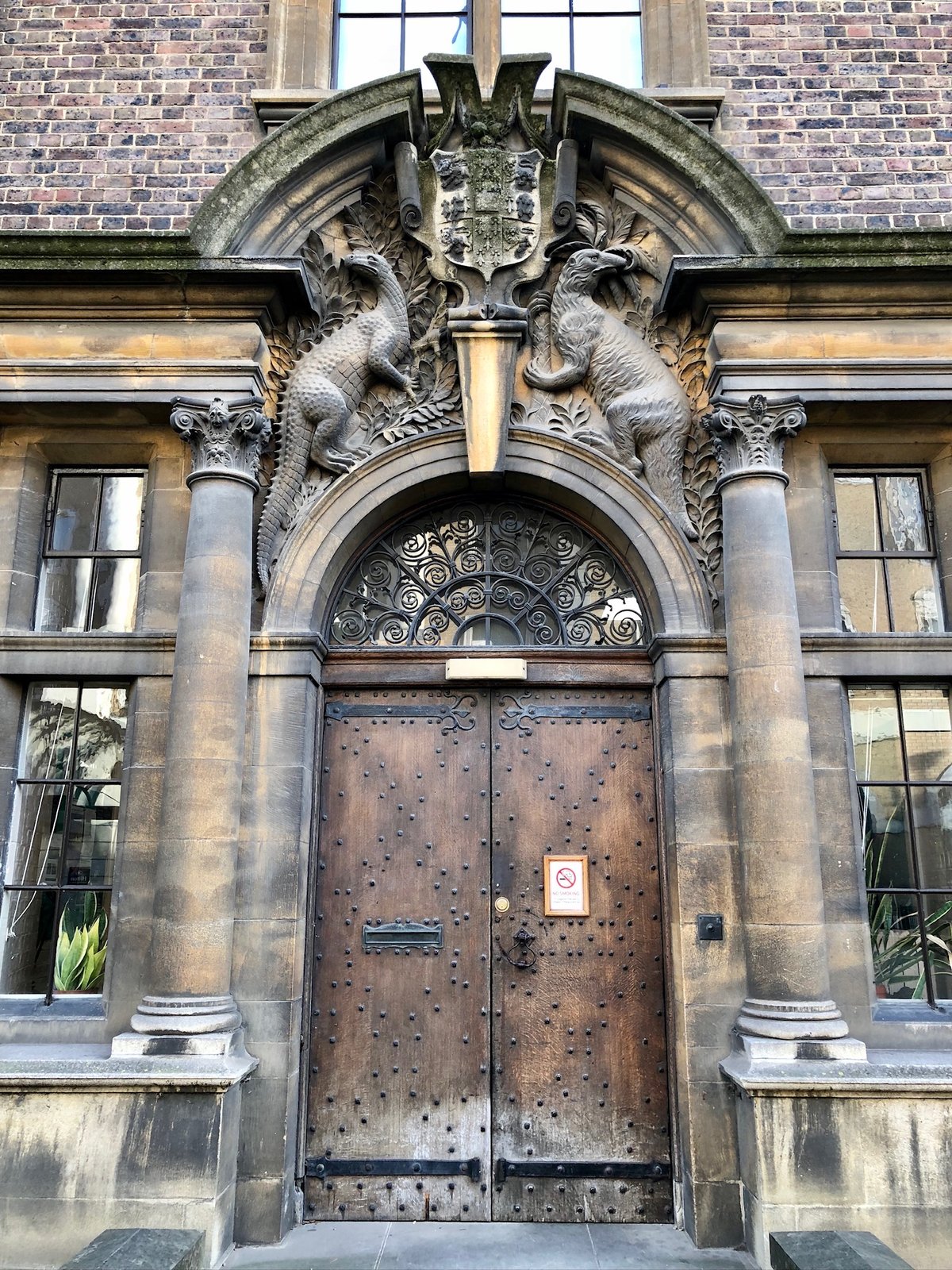
Comprehensive Guide to Visiting Downing Site, University of Cambridge, Cambridge, United Kingdom
Publication Date: 23/07/2024
Introduction to the Downing Site
The Downing Site at the University of Cambridge is a captivating blend of history, academia, and architectural splendor. Located in the heart of Cambridge, this site is a testament to the rich legacy of one of the world’s most prestigious universities. Established in the early 19th century, the Downing Site owes its origins to the substantial endowment left by Sir George Downing, 3rd Baronet, which, after legal disputes, culminated in the establishment of Downing College in 1800 (Cambridge University). The site has since evolved into a significant academic complex, housing several key departments and museums, including the Department of Archaeology and Anthropology and the Sedgwick Museum of Earth Sciences. This guide aims to provide a comprehensive overview of the Downing Site, covering its historical development, architectural significance, visitor information, and nearby attractions, ensuring an enriching experience for history buffs, prospective students, and curious tourists alike.
Table of Contents
- Introduction
- Origins and Establishment
- Architectural Development
- Expansion in the 19th Century
- 20th Century Transformations
- World War II Impact
- Modern Developments
- Visitor Information
- Preservation and Heritage
- Cultural Significance
- Notable Alumni and Contributions
- Future Prospects
- FAQ
- Conclusion
Exploring the Downing Site at the University of Cambridge - History, Visiting Hours, and More
Origins and Establishment
The Downing Site is a significant academic complex with a rich history dating back to the early 19th century. The site is named after Sir George Downing, 3rd Baronet, who left a substantial endowment to the university upon his death in 1749. However, due to legal disputes over his will, it wasn’t until 1800 that the university could utilize the funds to establish Downing College (Cambridge University).
Architectural Development
The architectural development of the Downing Site began in earnest in the early 19th century. The initial design was conceived by the renowned architect William Wilkins, who is also known for designing the National Gallery in London. Wilkins’ vision for Downing College was inspired by the neoclassical style, characterized by grand columns and symmetrical layouts. The first buildings, including the East Range and the West Range, were completed by 1820 (British History Online).
Expansion in the 19th Century
Throughout the 19th century, the Downing Site continued to expand. The addition of the North Range in the 1870s marked a significant development, providing more accommodation and academic spaces. This period also saw the construction of the Downing Chapel, a key feature of the site, which was completed in 1873. The chapel’s design, by architect Arthur Blomfield, reflects the Gothic Revival style, contrasting with the neoclassical elements of the earlier buildings (Historic England).
20th Century Transformations
The 20th century brought further transformations to the Downing Site. In the early 1900s, the site saw the construction of several new buildings to accommodate the growing number of students and academic departments. Notably, the Downing Site became home to the university’s Department of Archaeology and Anthropology, established in 1904. This department has since become one of the leading centers for archaeological and anthropological research in the world (University of Cambridge, Department of Archaeology).
World War II Impact
World War II had a profound impact on the Downing Site, as it did on many academic institutions across the UK. During the war, several buildings were repurposed for military use, and the site played a crucial role in the war effort. After the war, the university undertook significant restoration and expansion projects to repair the damage and accommodate the post-war influx of students (Cambridge University Archives).
Modern Developments
In recent decades, the Downing Site has continued to evolve to meet the needs of a modern academic institution. The construction of the Downing Site Library in the 1990s provided state-of-the-art facilities for students and researchers. More recently, the site has seen the development of the Alison Richard Building, completed in 2012, which houses the university’s Centre for Research in the Arts, Social Sciences, and Humanities (CRASSH). This building represents a blend of modern architectural design with the historic elements of the site (CRASSH).
Visitor Information
Visiting Hours
The Downing Site is generally open to visitors throughout the year, although specific building access may vary. It is recommended to check the university’s official website for the most up-to-date visiting hours.
Tickets
Entry to the Downing Site is typically free, but certain events or special exhibitions may require tickets. It is advisable to check for any ticketed events in advance.
Travel Tips
The Downing Site is located in the heart of Cambridge, making it easily accessible by public transport. The nearest train station is Cambridge Station, and several bus routes serve the area. Walking or cycling are also popular options for getting around the city.
Nearby Attractions
While visiting the Downing Site, consider exploring other nearby historical sites such as the Fitzwilliam Museum, King’s College Chapel, and the Cambridge University Botanic Garden. These attractions offer additional insights into the rich cultural and academic heritage of Cambridge.
Preservation and Heritage
The Downing Site is not only a hub of academic activity but also a site of significant historical and architectural heritage. Many of the buildings on the site are listed, ensuring their preservation for future generations. The university has undertaken numerous conservation projects to maintain the site’s historic character while adapting it for contemporary use. These efforts reflect the university’s commitment to preserving its rich heritage while fostering innovation and academic excellence (Historic England).
Cultural Significance
The Downing Site holds a special place in the cultural and academic life of the University of Cambridge. It has been the setting for numerous significant events, including lectures by prominent scholars and public figures. The site’s blend of historic and modern buildings creates a unique environment that embodies the university’s tradition of excellence and innovation. The Downing Site continues to attract visitors from around the world, drawn by its rich history and architectural beauty (Cambridge University).
Notable Alumni and Contributions
Over the years, the Downing Site has been associated with many notable alumni who have made significant contributions to various fields. Among them is Sir John Vane, a pharmacologist who was awarded the Nobel Prize in Physiology or Medicine in 1982 for his discoveries concerning prostaglandins and related substances. The site has also been a center for groundbreaking research, particularly in the fields of archaeology and anthropology, contributing to our understanding of human history and culture (Nobel Prize).
Future Prospects
Looking to the future, the Downing Site is poised to continue its role as a leading center for academic excellence and research. The university’s ongoing investment in the site ensures that it remains at the forefront of innovation while preserving its historic legacy. Future developments are likely to focus on enhancing the site’s facilities and expanding its capacity to accommodate the growing academic community at the University of Cambridge (Cambridge University).
FAQ
Q: What are the Downing Site visiting hours?
A: Visiting hours vary, so it is best to check the university’s official website for the most current information.
Q: Is there an entry fee for the Downing Site?
A: Entry is generally free, but some special events or exhibitions may require tickets.
Q: How can I get to the Downing Site?
A: The site is easily accessible by public transport, including trains and buses, and is within walking or cycling distance from many parts of Cambridge.
Q: What are some nearby attractions?
A: Nearby attractions include the Fitzwilliam Museum, King’s College Chapel, and the Cambridge University Botanic Garden.
Conclusion
The Downing Site at the University of Cambridge is a place of profound historical and academic significance. Its rich history, architectural heritage, and ongoing contributions to research and education make it a vital part of the university and a fascinating destination for visitors. Plan your visit today to explore this remarkable site and experience the blend of tradition and innovation that defines the University of Cambridge.
Summary and Final Thoughts
The Downing Site at the University of Cambridge stands as a beacon of historical and academic excellence. Its rich legacy, dating back to the early 19th century, showcases the university’s commitment to preserving its heritage while fostering innovation and research. From the neoclassical designs of architect William Wilkins to the modern developments like the Alison Richard Building, the Downing Site offers a unique blend of tradition and modernity (Historic England). Visitors can immerse themselves in the rich cultural and academic history through various attractions such as the Museum of Archaeology and Anthropology and the Sedgwick Museum of Earth Sciences. With free entry, accessibility, and a plethora of nearby attractions, the Downing Site is a must-visit for anyone exploring Cambridge. As it continues to evolve, the Downing Site remains a vital part of the University of Cambridge, attracting scholars, tourists, and history enthusiasts from around the world (University of Cambridge). Plan your visit today to experience the blend of tradition and innovation that defines this remarkable site.
Sources and References
- Cambridge University. (n.d.). Retrieved from https://www.cam.ac.uk/
- British History Online. (n.d.). Retrieved from https://www.british-history.ac.uk/
- Historic England. (n.d.). Retrieved from https://historicengland.org.uk/
- University of Cambridge, Department of Archaeology. (n.d.). Retrieved from https://www.arch.cam.ac.uk/
- Cambridge University Archives. (n.d.). Retrieved from https://archiveshub.jisc.ac.uk/
- CRASSH. (n.d.). Retrieved from https://www.crassh.cam.ac.uk/
- Nobel Prize. (n.d.). Retrieved from https://www.nobelprize.org/
